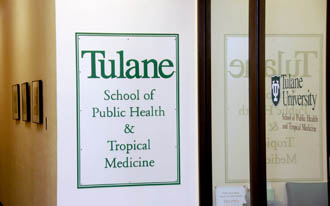Improved TB Test for Kids
“Diagnosing tuberculosis in children is challenging,” says Dr. Richard Oberhelman, Tulane professor of tropical medicine. Doctors in resource-poor countries now have guidance on the best test for the disease, thanks to an international study led by Oberhelman.

With a grant from the National Institutes of Health, the Tulane School of Public Health and Tropical Medicine led an international study of the most effective tests for diagnosing tuberculosis in children.
The research team's goal was to identify the most accurate and rapid test for tuberculosis in children in areas with limited laboratory capabilities. They compared recently developed methods for diagnosing high-risk children and concluded that the best test is the microscopic-observation drug-susceptibility (MODS) technique.
The MODS test detects the presence of TB-causing bacteria using microscopes to look for typical growth patterns in culture broth. The August issue of The Lancet Infectious Diseases published the study.
The availability of inexpensive and updated diagnostic technology is crucial for reducing the incidence of tuberculosis in developing countries. Children account for an estimated 20 percent of cases in high-incidence communities, but the outdated diagnostic tools available to physicians in such settings, including skin tests, chest X-rays and physical examinations, make it difficult to confirm cases of pediatric tuberculosis.
“Symptoms of tuberculosis in children are non-specific, specimens for testing are difficult to obtain, and cultures and smears are often negative,” says Oberhelman, professor of tropical medicine in the School of Public Health and Tropical Medicine.
The study was carried out in two hospitals in Lima, Peru, from 2002 to 2007, with 456 children of age 12 or younger enrolled as subjects.
The team compared results of several different types of tests, evaluating the sensitivity and speed of each method. Compared with other methods, MODS almost doubled the sensitivity of detecting tuberculosis, diagnosing 20 of 22 patients compared with 13, and in less than half the time (10 days versus 25 days).
